Your cart is empty
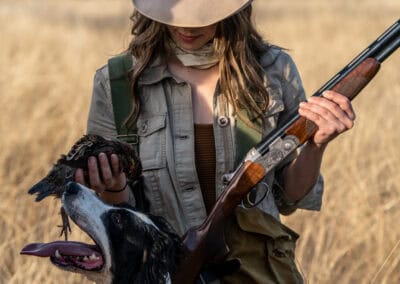
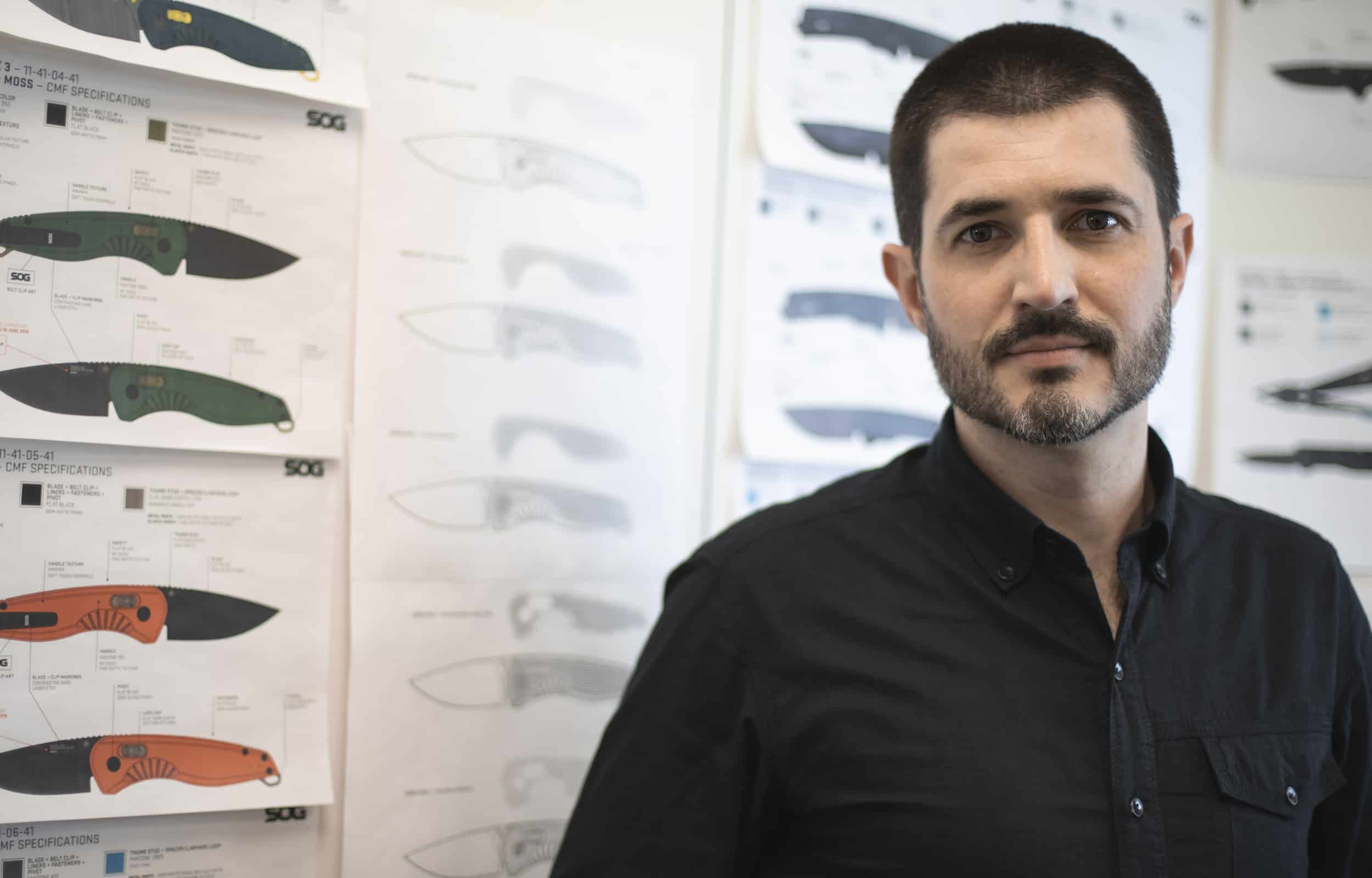
Few things beat the visceral feel-in-the-hand of a well-made knife. That is the moment of truth for outdoorsmen. You can’t polish bad design. You can’t fake quality. You certainly can’t market your way into a knife fanatic’s heart and mind. What individuals look for in a knife, and what constitutes a “great knife,” varies greatly from person to person. Much like beliefs around sex and money. No two opinions are the same. This is likely why there are countless knife manufacturers out there who have something for everyone. It’s tough and expensive to elbow your way out in front within the competitive fray as a knife maker. Trends come and go. Insurgent brands are continually breaking onto the scene with an innovation or specialty offering. Forums muddy the debate on good versus bad. One brand that is breaking through the sea of options out there is SOG Knives. A 35-year-old company currently in the middle of a renaissance under the obsessive eye and strategic mind of Jonathan Wegner. In his current role as VP of Brand at SOG, Jonathan Wegner guides the brand’s marketing, product strategy, industrial design, and eCommerce teams, and has overseen SOG’s recent brand refresh from the ground-up.
Wegner isn’t a bearded craftsman in a tiny shop with a long wait list. Rather, he’s an unconventional outsider who operates more like the Jonathan Ive of the knife world. His innovative designs and methodology, relentless R&D, and eagle-eye attention to detail are on full display in SOG’s resurgence as a knife maker that is flipping the script and turning the industry on its head. As Jonathan states, “My opinion’s probably not a popular one, in that the knife and tool industry is lagging well behind the innovations that are being seen in other outdoor industries. From the manufacturing techniques to the approach to design and engineering.”
Jonathan began his career as a designer in his hometown of Canberra, Australia. There he worked on projects for a number of national institutions, including the National Museum of Australia, Australian War Memorial, and Australian Institute of Sport, as well as projects for Raytheon Australia and Ford Motor Co.
Wegner took on the opportunity to work with SOG in 2018, a decades-old brand that was looking for a pivot. At SOG, Wegner lead a complete rejuvenation of the brand’s public perception and developed a unified product design and roadmap resulting in a methodical refresh that was publicly launched in 2020.
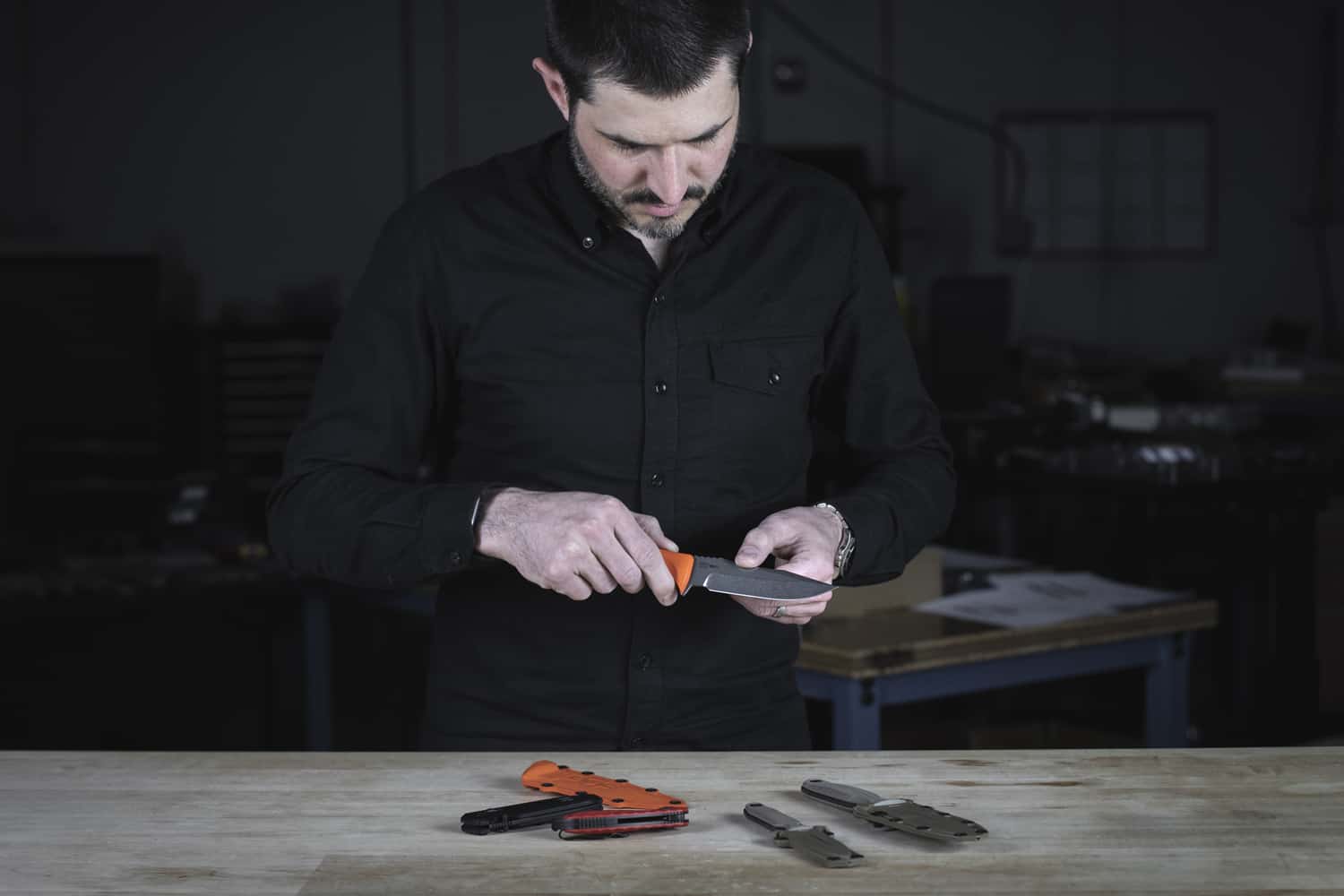
Jonathan Wegner, SOG’s VP of Brand
Bill Roden: Tell us about your professional background. What were some of your best and worst experiences and what did they teach you?
Jonathan Wegner: I’m what I like to jokingly call “a classically trained designer that evolved to have other skills”. I think the easiest way to describe what I do now is ‘design strategy’, which means I work with all parts of the business to create a set of guiding principles to meet our business’s mission and execute it through the design of our products.
I’ve got a mixed background that started with design and has continuously expanded organically to adjacent disciplines over the last two decades.
I now get to use my design skills with the addition of marketing, product and strategy experience as the VP Brand at SOG, where I guide brand, marketing, product strategy, industrial design, and other related aspects of the business so that everything we do feels integrated.
I’m originally from Australia, where I worked half of my career as a designer before managing a design studio, and then moved into the corporate world with Raytheon. A decade ago we crossed the Pacific to San Diego with a fellow group of Australians to build a phone case company called LifeProof. After crazy growth we got acquired by OtterBox, after which I was asked to run their in-house brand agency at OtterProducts. Then consulting for a few years with early- to- mid-stage start-ups, before being approached for the role I’m at now with SOG.
I’m naturally curious and have worked with many people that has been generous to share insights about their roles, this have given me a better understanding of what they do within a business and what they need to be successful. In turn I tend to use these learnings, as appropriate, with every business I’ve worked with since.
One positive experience that stands out was from when I was still in Australia, I worked in the campaign headquarters during the Federal Election in 2009. The policy teams were drafting proposals for laws that, if enacted, would affect the whole country. Literally a handful of people were generating ideas that would impact the lives of millions. My takeaway from this was that the right ideas can mobilize and change things. An idea often starts with one person. This has stayed with me and motivated me since, in fact it’s what really drove me to work with start-ups.
The worst have always been what happens when I’ve seen things done without conviction or focus. I’ve been guilty of this too. I’ve started businesses that had a unique offering and were well-researched, but I just hadn’t budgeted enough time to properly execute on them.
Combined, my worst and best experiences continue to guide me — anyone can have a great idea, but it will die on the vine if not well-executed.
BR: Tell us about your creative approach and philosophy. Where do you go for inspiration both categorically and non-categorically? What do you read and watch? What podcasts do you listen to? What subjects interest you the most that inform how you design and engineer products and the SOG brand?
JW: My creative philosophy is pretty simple: do things that matter.
Whenever we’re working on a project a series of questions comes up constantly; does this matter, does it make life better, is it important, is it beneficial, will it matter in the future? Since our development timelines are a couple years long and we have to justify any investment, we ask these questions continuously. Part of answering “does it matter” means you need to talk with people outside of the company. The more the better. Ultimately, when you make things for people you need to be solving their problems. If you’re not, you’re making art.
I’m very broad in terms of where I get inspiration. Almost every aspect and type of outdoor activity are a go-to source for me, even those I don’t participate in. Sports gear, street wear, material design, consumer electronics, anything really that has an interesting and thoughtful story behind it. I really love considered everyday items that have just the right amount of design and investment put into them that provide a useful object for lots of people. They don’t have to be fancy, some of my favorite objects, like the OXO whisk, just work and are relatively inexpensive.
I’m also fascinated by what NASA and Space X are doing with the next generation of space exploration, car design is also interesting to me. Both require long term vision and bring together huge teams that, while independent, are working together toward highly complex goals.
While getting inspiration from all these sources can get you fired up, I find my most important inspiration comes from actually talking with people. For example, before we draw a single line, we research, interview, create hypothesis, test them with users, and go through this process a couple of times before we settle on the best direction. I am yet to be involved in a single project where I haven’t been surprised by an insight or idea from asking questions of people outside our group. Design is the ultimate team sport that everyone gets to participate in.
Since at SOG we create tools that are made to be used, abused and often, save lives, performance is king. If they get admired for their aesthetic qualities, that is a bonus.
Most of the best ideas have come from our engagement with our cadre of real-world end-users who are constantly providing feedback on what’s working and what could be better or what’s missing. Sometimes the feedback is hard to hear, but we only get better through adversity.
In terms of what I read, watch and listen to, they mostly revolve around similar themes of space exploration and sci-fi in the same genre, all sorts of forms of design, Formula 1 racing, marketing, current events, philosophy, and history. I can’t say I have a lot of time to read and listen to everything all the time, but I dive into these when I need a hit of inspiration or contemplation.
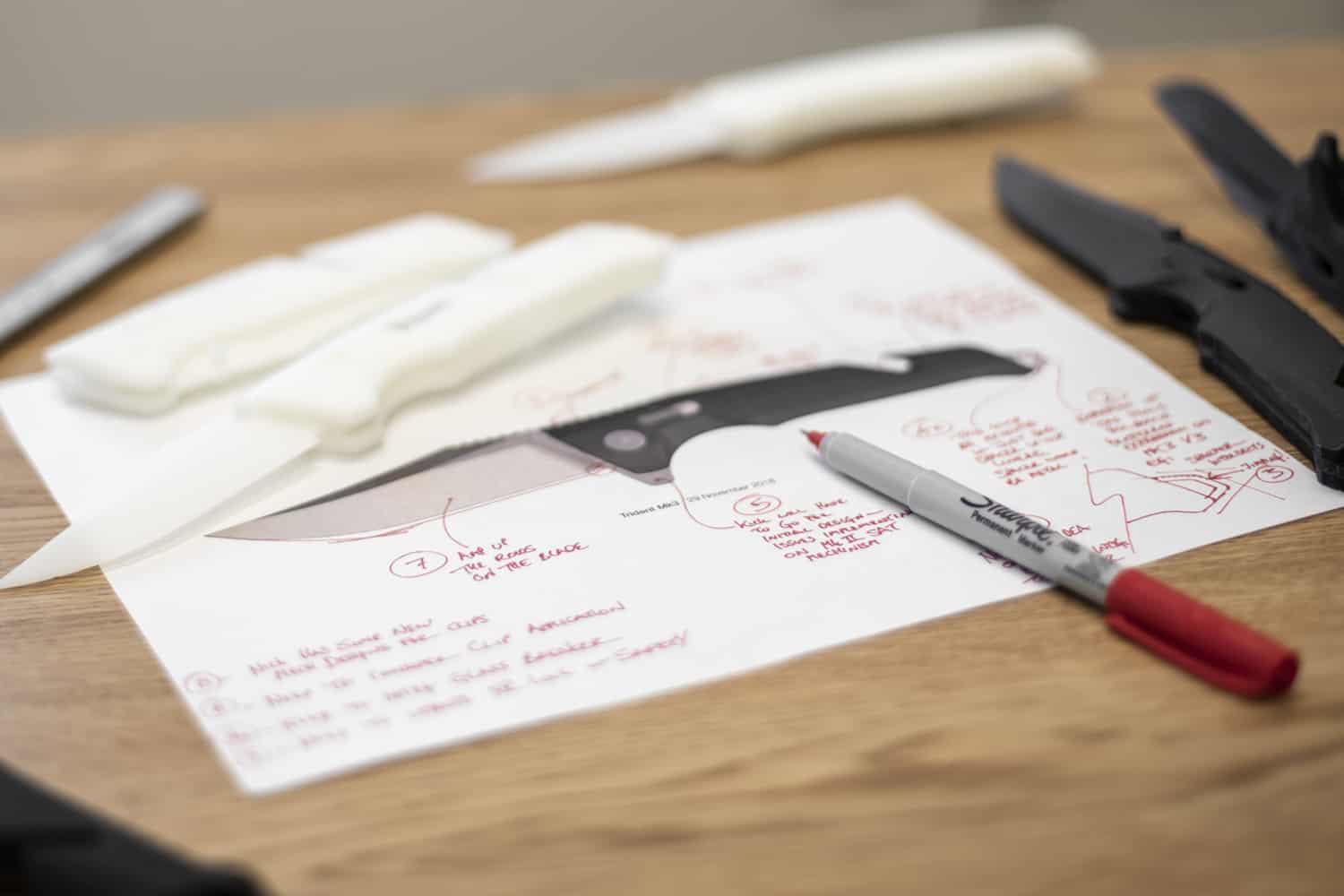
BR: What is your opinion about the blade industry? What works and what needs to change?
JW: My opinion’s probably not a popular one, in that the knife and tool industry is lagging well behind the innovations that are being seen in other outdoor industries. From the manufacturing techniques to the approach to design and engineering. Granted, we make what is one of the oldest tools known to man, but there’s still much opportunity for innovation.
I think what works is that there is a really passionate core that loves what knives and tools offer them — the ability to perform tasks more efficiently, such as processing game, staying protected, and being prepared for whatever the day might throw at you. However, there’s stigmas and a level of inaccessibility that comes with staying too traditional in your approach or designs that don’t project an accessible or relevant tone that discourages people from picking them up and learning the benefits. SOG was guilty of that, if you look back at our catalog 5 years ago everything was black and tactical looking.
There is an incredible amount of untapped opportunity that is yet to be focused on knives, tools and other gear. At the center of my approach is trying to elevate and make more relevant, not just SOG, but all in our industry to bring new solutions and new benefits to users that are yet to appreciate the benefits of self-reliance. I hope other knife makers read this and are inspired to try a new material or new approaches that bring new users in to be more self-reliant.
As with many industries there a place for tradition, but there’s also room for pushing the boundaries, my greatest challenge at SOG is balancing these two factors.
BR: Tell us about SOG and how you came into the company. What opportunities did you see and what inspired some of the changes you’ve made?
JW: SOG is a 35-year-old company, founded by Spencer Frazer who came across a special Bowie knife in the 80’s. It was unmarked and had many unique characteristics which caused it to stand out. Spencer found that it was specifically designed for members of a highly classified US special ops unit, known as MACV-SOG. That knife inspired Spencer to reproduce the original MACV-SOG Bowie knife and pay tribute to the special ops unit that created it. What began as a single commemorative model soon became a full line of tools. For the first two decades of SOG, Spencer worked closely with professional users of knives and tools to develop specialized gear, including developing a knife for the US Navy SEALs with the Seal family of knives.
In the last decade new investors brought in management teams that grew the brand, but diluted Spencer’s vision of focusing on specialized tools developed closely with end-users. It’s around the end of 2017, at the height of this decline that I came into the business.
A recruiter approached me and thought I had the background for a role she was recruiting for. I was surprised when I found out it was SOG. As a kid in the 90’s I lusted after SOG products in the glass cabinets of camping and military disposal stores, and the first knife I bought when we moved to the US a decade ago was a SOG, so I had some history with the brand.
However, I hadn’t been paying attention what had happened in the last 10 years. When I started researching the brand, many of my military and hunting buddies all said the same thing: “I loved the old SOG, but the current SOG sucks”. The other interesting thing they said was that when they had a SOG they felt prepared and trusted that the tool would serve them in a time of need. But a variety of factors had deteriorated the good feelings they once had about the brand.
As a brand and product guy, that’s something I felt I could work with. This was a brand with a lot of pedigree and there was a desire by the management team to make a change, so I took on the role as it was something I felt I could really help with.
Where we’ve shifted the brand includes telling the story of what SOG means to us. This shift is reflective in expanding our name to “Studies and Observations Group” and telling our product creation methodology, which is already somewhat spelled out in our name: Study, Observe, Understand, Apply, and Repeat. It’s a version of the military’s OODA loop or the scientific method, which is appropriately reflective of my personal approach to design, as well as in the background of our head of Innovation and Product Development, Beren McKay, who was a DARPA researcher prior to joining SOG.
A big part of transitioning SOG from a “tactical knife brand” to the broader position we take now, is to be the brand that endeavors to “enable human potential”. If you’ve got one of our tools you’re better prepared to tackle the day and push the boundaries, it doesn’t matter if your day starts in an inner-city apartment, a tree stand or in a hostile environment.
We’re now past the one-year mark of the brand and product refresh and the response has been, for a lack of a better word, incredible! People we’d lost a decade ago are coming back to the brand and new users that have never bought a knife, especially those new to outdoors pursuits, have been buying a SOG as their first knife.
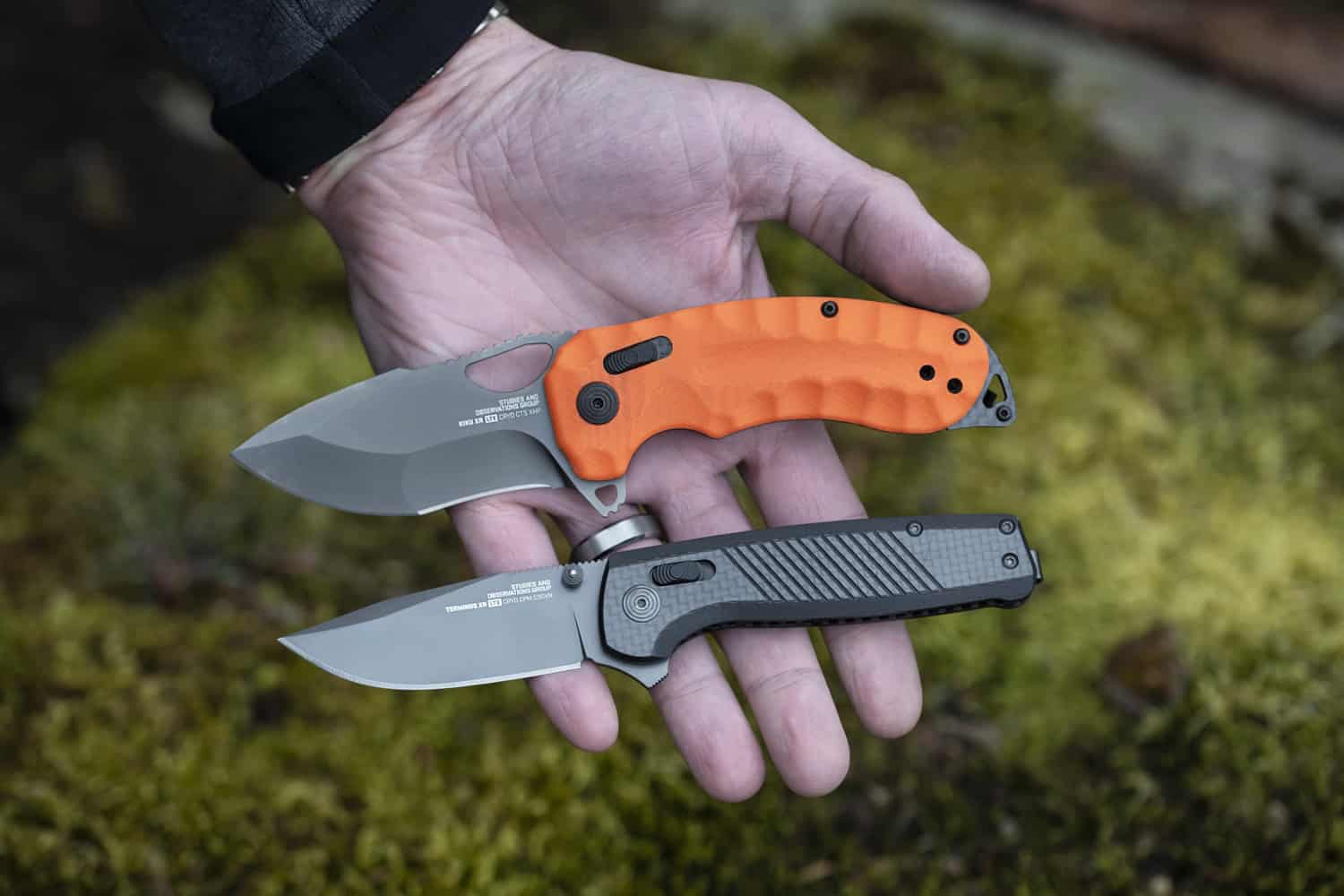
BR: What are some of your recent innovations and products?
JW: We’ve had a pretty significant refresh of our product line-up, since 2020, we’ve released something like twenty-something completely new designs.
There’s quite a few innovations, as almost every product we’ve released since our refresh has several layers of new thinking, here’s one example and how it came about.
One of our recent innovations is our LTE series of folding knives. Light Edition, or LTE, took a materials innovation approach to lighten some of our most popular folding knives. Instead of using carbon fiber as purely an aesthetic treatment, we used it to replace steel structural components, resulting in nearly a third less weight.
This came about as we were getting great feedback on one of our beefy outdoor folders, Kiku XR. The hand feel, size, XR Lock reliability and strength were all good— but a common request was “can you make it lighter?” We thought we could, but we wanted to do it in a way that didn’t compromise capability and user confidence. Common approaches to lightening a tool, such as size reduction, cut-outs or feature deletions like removing the handles, causes compromised grip and usability. Our approach provided a solution that kept everything users relied on with Kiku XR, yet delivered on the reduced weight ask. We see LTE as a zero-compromise solution in giving users less weight, without messing up what’s already working.
This is typical to how we approach all new designs, we aim to balance the purpose of the tool with the choice of materials, how it is carried, deployed, used, and stowed, and what it needs to communicate about its purpose. Does it need to be low-vis, bright and easily seen if dropped, or an extension of your personal style. Or a combination.
On a more practical side, all the new SOG products aim to be completely ambidextrous to allow users to have the same interface regardless of which hand they use, useful when your dominant hand is busy.
Over the course of developing the refreshed product line, we developed about 15 technical innovations, of which ended up in at least five patent claims so far. I don’t think we’ve released many products recently that don’t have some kind of IP in mechanical or design advancements baked into our approach.
BR: What is your take on the hunting industry? How can brands like SOG be a voice for change and ethical behavior?
JW: Since I straddle various different audiences in my work, not just hunters, but the many facets of outdoor, urban users, Military and First Responders — and as outsider coming from Australia to the US and seeing the traditions of hunting here — I get to see many different views and the big take-away is that there feels like there’s an invisible barrier that needs to be removed to make it easier to bring new hunters in.
I’d argue that unless you’ve been hunting generationally, or you personally know someone that’s a hunter, it’s unlikely that you’ll be looking to hunting as a means of taking responsibility for your food or to feel a deeper connection to a place. The other big challenge is outdated notions about who hunters are and just general “bad press”, which is often generated when questionable or unethical behaviors are made public.
Because of this, brands that cross over multiple audiences have an opportunity to tell positive stories about the benefits of hunting, make it more accessible, make it a desirable practice, and encourage those that have never considered hunting to engage. There’s a lot of brands directly within and adjacent to hunting that can do more to encourage new hunters and new perspectives.
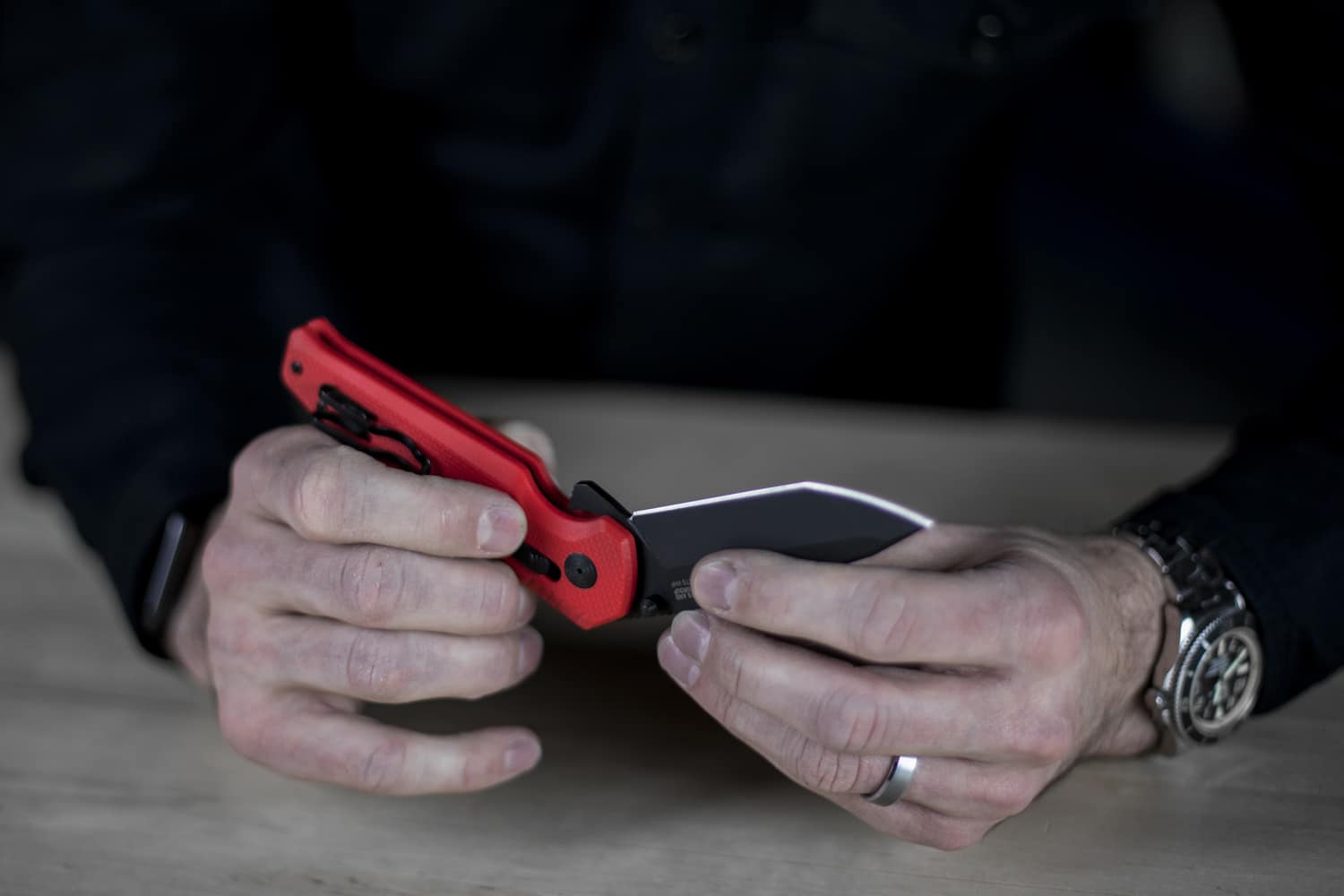
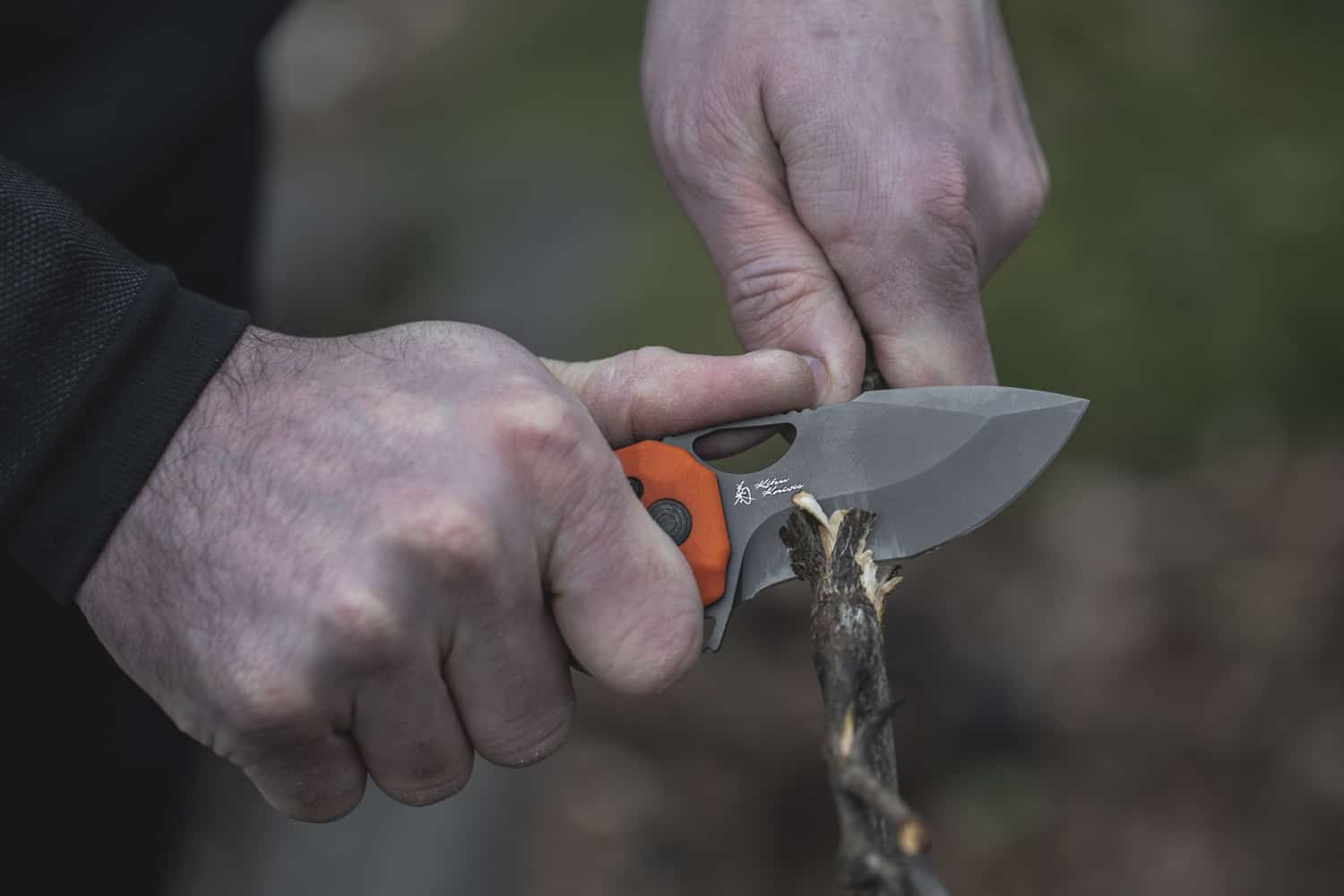
BR: How is SOG a good partner for hunters and outdoorsmen?
JW: There’s two main areas that we focus on. The first is to be a trusted companion and partner to those that are seasoned hunters and outdoorsmen, enabling them to be more effective in passing on their passion and knowledge to the next generation. We do this by supporting Veteran hunts, as well as education programs, like ‘Shoot like a Girl’, who tour around the US providing a positive learning experience to women in shooting sports and hunting
The second is to provide an accessible entry point to those that are new to hunting, that may have never even considered it. We recently partnered with Chris Brinlee Jr, to share his experience on his very first hunt, why he chose to harvest his own meat and the challenges surrounding it. As we’re aware there’s many false perceptions around hunting that require a very grass roots effort to overcome. If anything, during the 2020 pandemic onwards we’ve seen a massive spike in interest around hunting, specifically in terms of food sourcing, and its from those that you wouldn’t typically associate with it, such as younger city dwellers. If these people are coming to hunting through our brand, we see it as our duty to communicate and promote hunting in a way that is positive and encourages them to want to learn more.
We also support Gold Star hunts for children who have lost a parent during active military service. Supporting these hunts provides a way for the next generation of hunters to be taught vital skills and appreciation for their place in nature.
BR: What conservation groups does SOG support now and who do you hope to work with in the future?
JW: We’ve supported a number of groups in the past, right now we’re maintaining a focus on supporting hunter education and communicating the benefits of hunting to new audiences. However, we’ll soon be looking to work with new partner organizations, at this stage it’s undecided whether we’ll work with a specific organization or with individuals, but ideally I’d like to start locally in our own state of Washington.
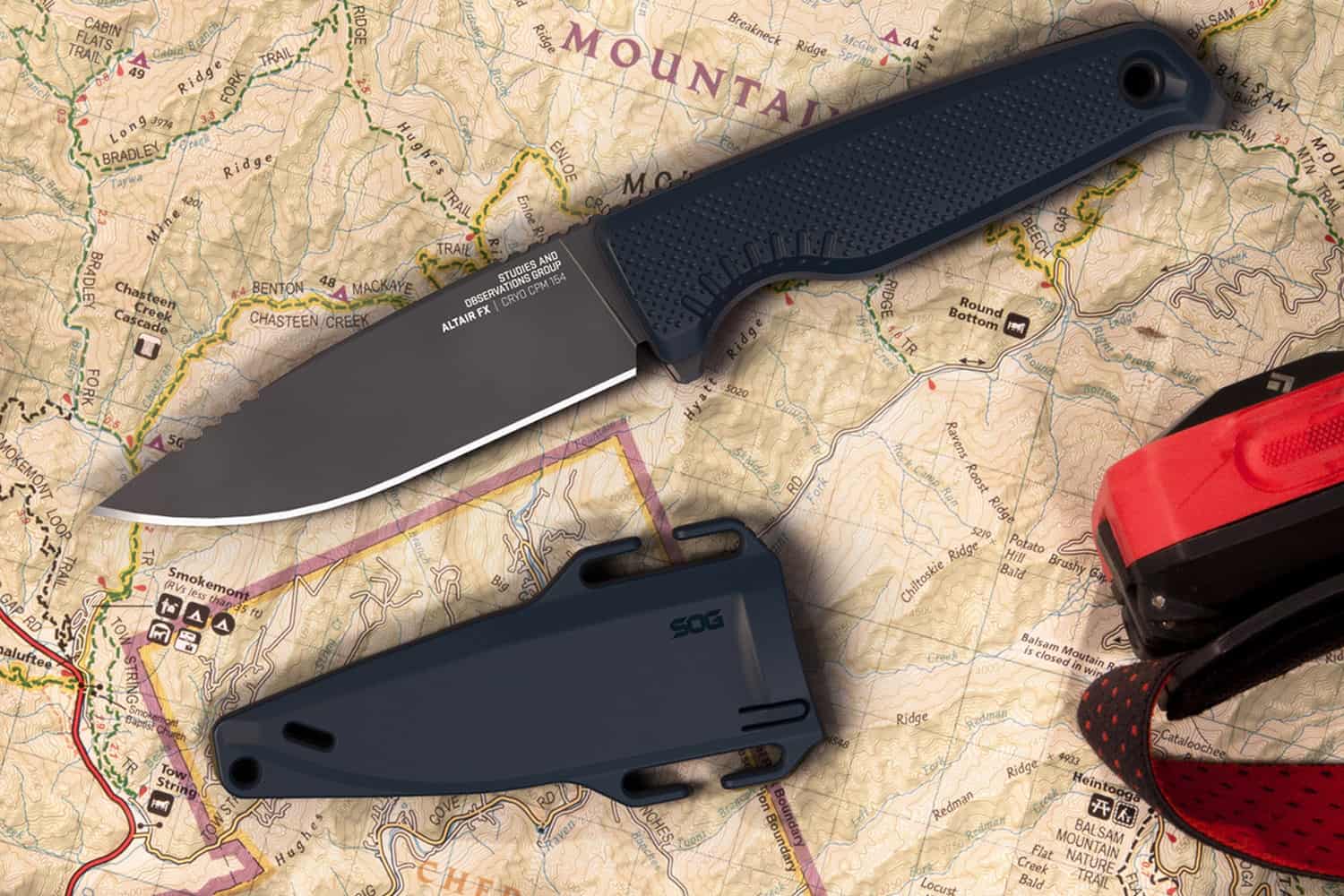
New for 2022, Altair FX
BR: Is SOG going to explore other products?
JW: Currently we’ve been totally focused on ensuring that we’re doing our ‘core products’ well. However, as we talk with our users we’re constantly listening and looking for opportunities. We have some future plans that will build on what we do well and extend out to bring new solutions to old problems.
Having said this, I can tell you that for Spring 2022 we have a pretty healthy focus on outdoor gear that brings some unique SOG solutions to knives and tools that we’re all quite proud of and impatient to get into people’s hand to see how they’ll use our gear.
The nature of our group is that we’re a naturally curious bunch, and constantly on the look-out to solve problems in new ways, therefore we’re persistently open to new ideas, products and areas to go into. As mentioned, we’re constantly having conversations with different groups of our users and all the good ideas start off with a comment like, “when my hands are cold, I wish there was a better way for me to hold this tool when I’m field dressing an elk” or more broadly, “when I’m ultralight backpacking, I only take three tools, can you combine them?” We have more ideas than we can address, so part of the challenge is working out what to do next.
BR: Who are your personal design heroes?
JW: I’m a little wary of putting any specific designer on a pedestal. I’m usually more interested in specific projects and the ideas behind them.
But I will say I enjoy nothing more than working with our core design team — Josh Buesseler our lead industrial designer, Beren McKay whom I mentioned earlier, and Chris Cashbaugh our head of product strategy — we’ve all had very different experiences and backgrounds ranging from consumer electronics to outdoor gear to defense research — it all comes together to make for a rich discussion as we develop new ideas.
I love reading the full interviews Gary Hustwit released with designers for his Helvetica / Objectified / Urbanized documentary series — the thinking behind how these designers tackle projects is always fascinating.
BR: What brands do you envy?
JW: I really like the line-up of products and materials research that’s consistent every season from Arc’Teryx and Crye Precision. I admire the culture and drive of Space X to achieve insane goals and, even when they look like failures from the outside, Space X is proud of them as they mark the next step in driving towards achieving their mission of making humans an interplanetary species. And then there’s lots of watch brands that are doing interesting things with materials and details, like Breitling and NOMOS Glashütte. It’s really easy to envy segment-dominating brands like Porsche, Nike and Apple, but I look to these kinds of brands for insights into process and the discipline required to make what they make.
So, as you can see, there’s a little something from everyone across the board.
BR: What is your biggest fear professionally?
JW: I think it’s the same that most people fear professionally, it’s to have achieved nothing of worth. In the last decade I’ve been fortunate to have worked within multiple organizations that have, and continue to, create products that provide value, and that impact people’s lives positively. I hope the ideas and processes I established at each organization I was with previously continue to guide and influence what they create. Ultimately, I understand that everything eventually becomes redundant, but I think I have satisfaction knowing that part of the strata I laid down was a necessary step for those organizations to move to the next part of their journey.
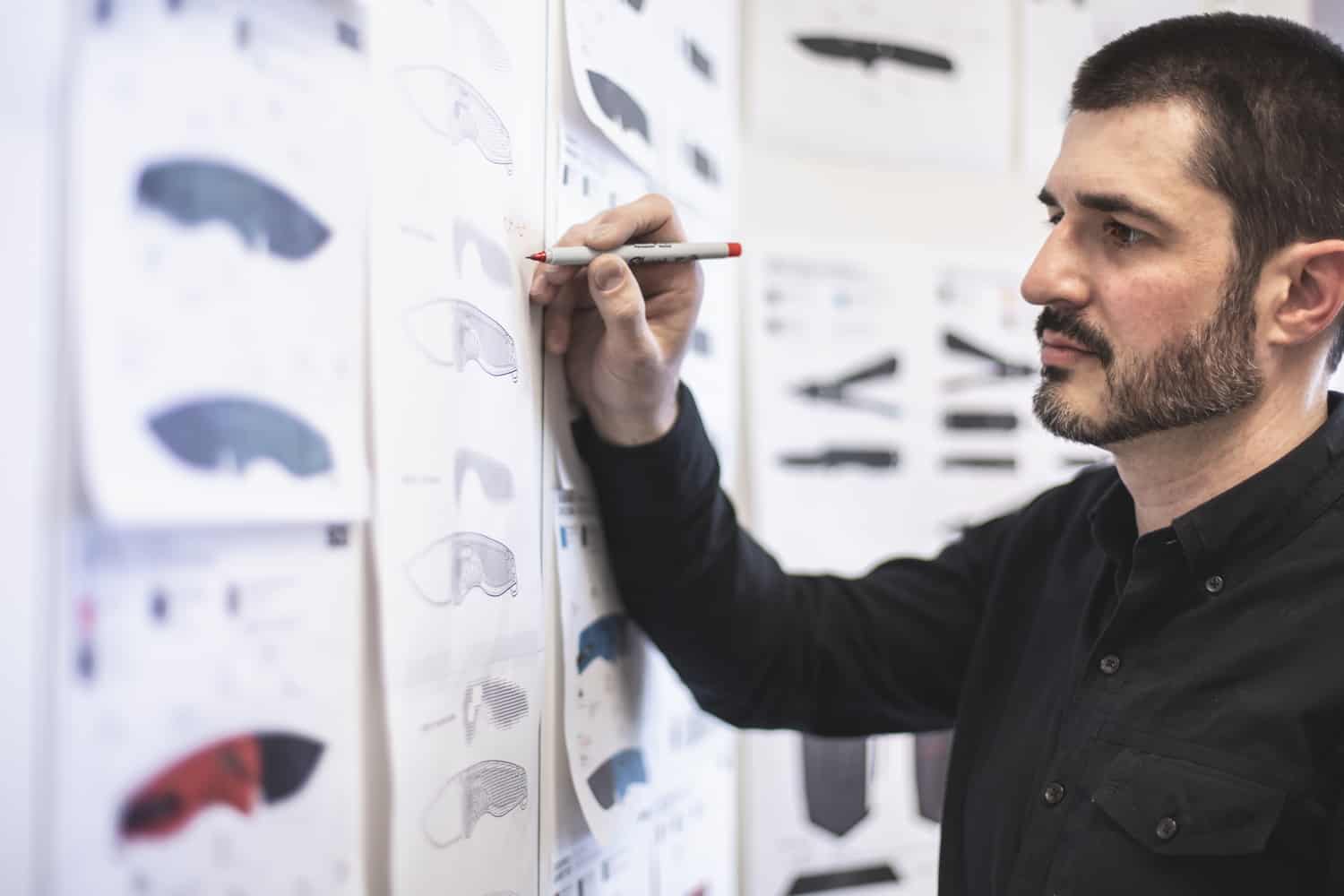
BR: What motivates you daily to push what’s possible for SOG?
JW: SOG is one of those places where it’s an easy place to get up each day to go to work at because the mission is clear and it affects real change through ‘enhancing human potential’. We create gear that solves problems, if we can make someone more confident and more capable, then we’ve achieved what we set out to do. Being able to up the ante, by making it easier and quicker to manipulate a tool or deliver improved materials to provide a full-sized tool at less weight, all these factors have a real impact for those that rely on what we do. Nailing that is critical, as it has an impact on keeping people alive. There’s no greater motivator than keeping people alive.
BR: What are some professional aspirations or personal projects outside of SOG?
JW: Being able to create something valuable — both in terms of building an organization and delivering physical things people can hold — this is incredibly satisfying to me. I think this has been the case more-so at SOG than anywhere else, since we create durable items that can become heirloom pieces and it’s taken a massive shift for the organization to be able to do this again.
Outside of SOG right now, I haven’t had much time for personal projects. I used to spend a lot more time on a variety of pursuits — consulting with a variety of businesses, personal business or design projects, that sort of thing — but SOG really challenges both my personal and professional aspirations at the moment in the best possible way.
Right now, a good weekend is when I get to spend it outdoors exploring Washington with my wife and daughter, talking with family and my eldest daughter in Australia, spending a little time wrenching on my project car or at a car meet, or some time at the range to stay proficient.
BR: What do you see as your true life’s work? What is the one thing you hope to accomplish personally and professionally?
JW: My personal and professional achievements tend to overlap considerably. I’ve almost always been fortunate enough to work on things that I’m incredibly passionate about in my personal life and make a career out of it.
I get a lot of satisfaction out of being part of a group of inspired and talented people, and together being able to build something lasting. Be it an organization or something physical, creating it to empower and benefit others beyond my time there is what I’d like to leave behind. My hope is that the thing I leave behind is something that helps someone achieve something great.
Related Stories


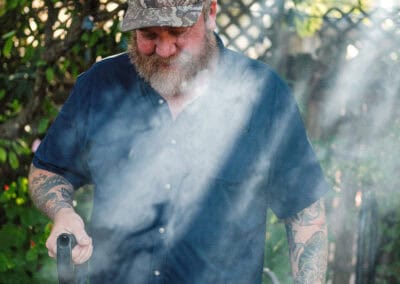
Latest Stories


